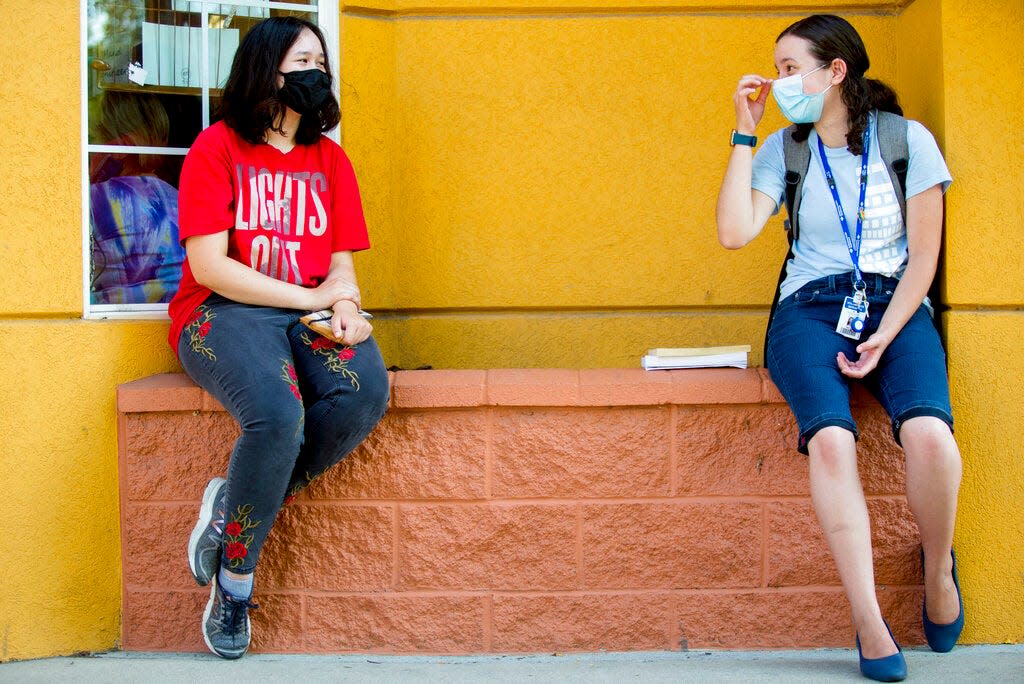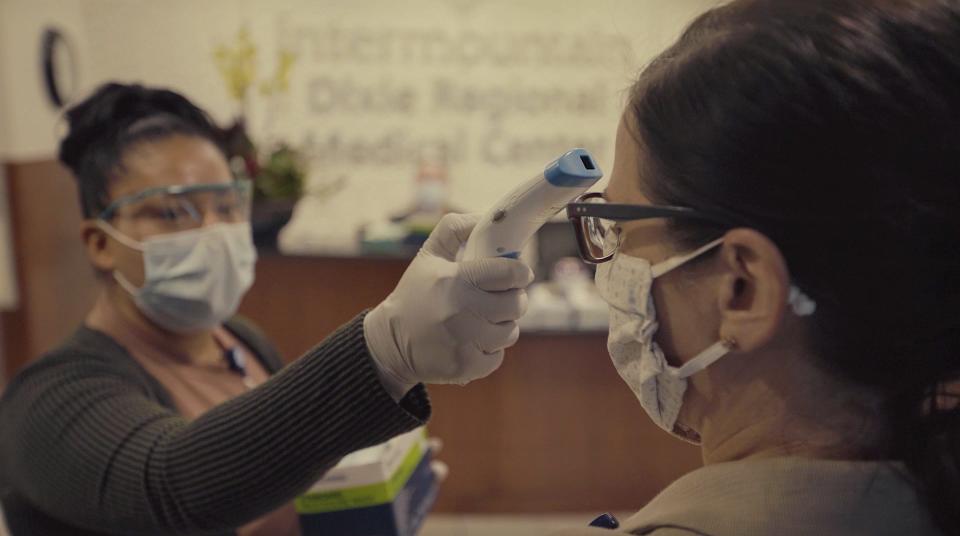Masks for the holiday? CDC recommends face masks as flu, COVID-19, RSV cases rise

- Oops!Something went wrong.Please try again later.
Could facemasks be making a return for the 2022 Christmastime holiday season? They might, with the Centers for Disease Control announcing this week a recommendation that people wear face masks to combat a "tripledemic" of flu, COVID-19 and RSV.
Officials said masks could help reduce the spread of respiratory illnesses amid a growing spike in hospitalizations from the those three main culprits, with CDC Director Dr. Rochelle Walensky saying the busy holiday season could make matters worse.
“We also encourage you to wear a high-quality, well-fitting mask to prevent the spread of respiratory illnesses,” said Walensky, adding that people living in areas with high levels of COVID-19 transmission should especially consider masking.

Health departments nationwide have warned that this winter could present more illnesses than usual. Cases of common respiratory infections were historically low in recent years after the COVID-19 pandemic, with many offices closed, some students learning virtually and many people wearing masks when they visited others. But this year, with schools, offices and other busy places in full swing and the usual winter viruses returning to their past seasonal patterns, hospitals have reported increased numbers of patients, especially sick children.
Health experts say most hospital admissions are dominated by respiratory syncytial virus, rhinoviruses and enteroviruses, which mostly cause cold-like symptoms, including a runny nose, sneezing, coughing and a fever.
But a growing number of young children are going to the emergency room this year, as they lack immunity from prior infection, Dr. Elizabeth Schlaudecker, clinical director of the Division of Infectious Diseases at Cincinnati Children’s Hospital, told USA TODAY.
“A lot of children everywhere are getting these viruses for the first time in rapid succession,” Schlaudecker said. “It’s a strain on the health care system because some of these kids are more sick or require medical attention.”
In Utah, hospitals statewide reported an increase in the number of children with RSV, with the Utah Department of Health and Human Services actively campaigning to get Utahns to get vaccinated for the flu and COVID-19, hoping to tamp down on those infections and help hospitals keep up with the growing demand.
“The real concern in this term ‘tripledemic’ comes from the idea that they all may hit about the same time,” said Dr. Andrew Pavia, chief of the Division of Pediatric Infectious Diseases at University of Utah Health. “This could overwhelm many of our health systems.” These systems are already struggling with staff shortages and exhaustion after almost three years of COVID-19."
While people who get COVID-19 can still get sick even after they've had a vaccine, they should have less severe symptoms and have a far lower chance of requiring a hospital stay or dying. The new bivalent COVID-19 vaccine contains two components to provide better protection against the omicron variant.
This article originally appeared on St. George Spectrum & Daily News: Masks recommended due to 'Tripledemic' of COVID-19, flu, RSV

